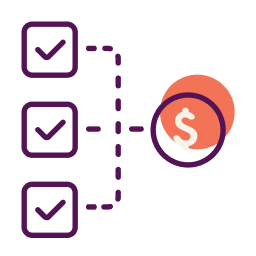Now is a great time to jump on business financing opportunities. It’s easier to get approved, and as the economy improves, banks are more willing to lend. If you’ve been denied in the past because of a low business credit score, don’t give up. Shopping for different types of lenders may be the answer.
Two of the most popular—and cheapest—financing options are business loans and lines of credit. Both will get cash in your pocket, but they work a lot differently.
The Basics: How they work
A business loan is fairly simple to understand. Your lender gives you a specific amount of money all at once. That amount, plus interest, is repaid in pre-arranged monthly installments.
You’ll usually have from 1 – 15 years to pay it back. Loans can carry closing costs of 2% – 7%.
The loan concept is easy, but the application and paperwork can be confusing (check out our ebook on business financing).
A business line of credit gives you the option of borrowing just the amount you need, up to a pre-arranged maximum amount. Think of it like a credit card.
You only pay interest on the outstanding balance, not on any unused portion. Credit lines have minimal or no closing costs.
What’s best for your situation?
Normally, you wouldn’t take out a loan unless you have a specific long-term purpose for the cash—usually to help fuel growth. May be you want to:
- Add vehicles to your fleet
- Buy more efficient equipment
- Expand
- Hire more employees
You should know exactly how using the loan will boost your revenues. Your lender will want to see the forecasts.
Lines of credit, however, are best for short-term purposes such as financing receivables, marketing, and making payroll.
They can be invaluable for unexpected cash-flow issues, but be careful! Don’t max it out on “surprises.”
While it’s reassuring to have access to working capital, you should still be using as much of it as possible for activities that generate revenue.
Paying back the money
Because loans carry fixed terms, monthly payments are usually higher than the payments on a credit line.
For example, the monthly payment on a $50,000 loan can be up to $700 more than if you owed $50,000 on a line of credit.
However, the interest rate on a loan is usually locked in, so it won’t change. This can make it easier to plan for.
On the flip side, the business line of credit rates will usually vary, based on the prime rate. This can be trouble if rates surge higher, but it also has an added benefit:
If you manage your business credit well, your credit scores will improve. That means you can negotiate lower rates or a higher credit limit as they do.
Which one is easier to get?
Typically, it’s easier to qualify for a loan because the money is secured by collateral—usually the equipment or building you’re using the money to purchase.
If you don’t pay back the money, the bank takes your collateral. Sometimes the required collateral can be worth twice as much as the loan itself!
Although credit is loosening, banks are still hesitant to take on much risk. Don’t be afraid to interview multiple lenders and negotiate for lower collateral requirements. Always be sure to check your credit score before applying to make sure you’re competitive. You can do so for free with Nav.
You may find that smaller community banks are more willing to bet on your business than big banks, especially if you have an existing relationship.
Collateral may also be required for a line of credit, but not always. Either way, it carries more risk for the lender because you have discretion on how the funds are used. What you purchase may not result in sufficient collateral to secure the amount you owe.
Generally, a strong business credit rating and solid financial history are required to get an unsecured line of credit. Few lenders will approve these for young start-ups.
Make a plan and execute
Few businesses are able to grow without financing help. With interest rates near record lows and banks more willing to lend, now’s the time to put together a plan and pull the trigger.
This article was originally written on June 6, 2018 and updated on February 2, 2021.



Have at it! We'd love to hear from you and encourage a lively discussion among our users. Please help us keep our site clean and protect yourself. Refrain from posting overtly promotional content, and avoid disclosing personal information such as bank account or phone numbers.
Reviews Disclosure: The responses below are not provided or commissioned by the credit card, financing and service companies that appear on this site. Responses have not been reviewed, approved or otherwise endorsed by the credit card, financing and service companies and it is not their responsibility to ensure all posts and/or questions are answered.